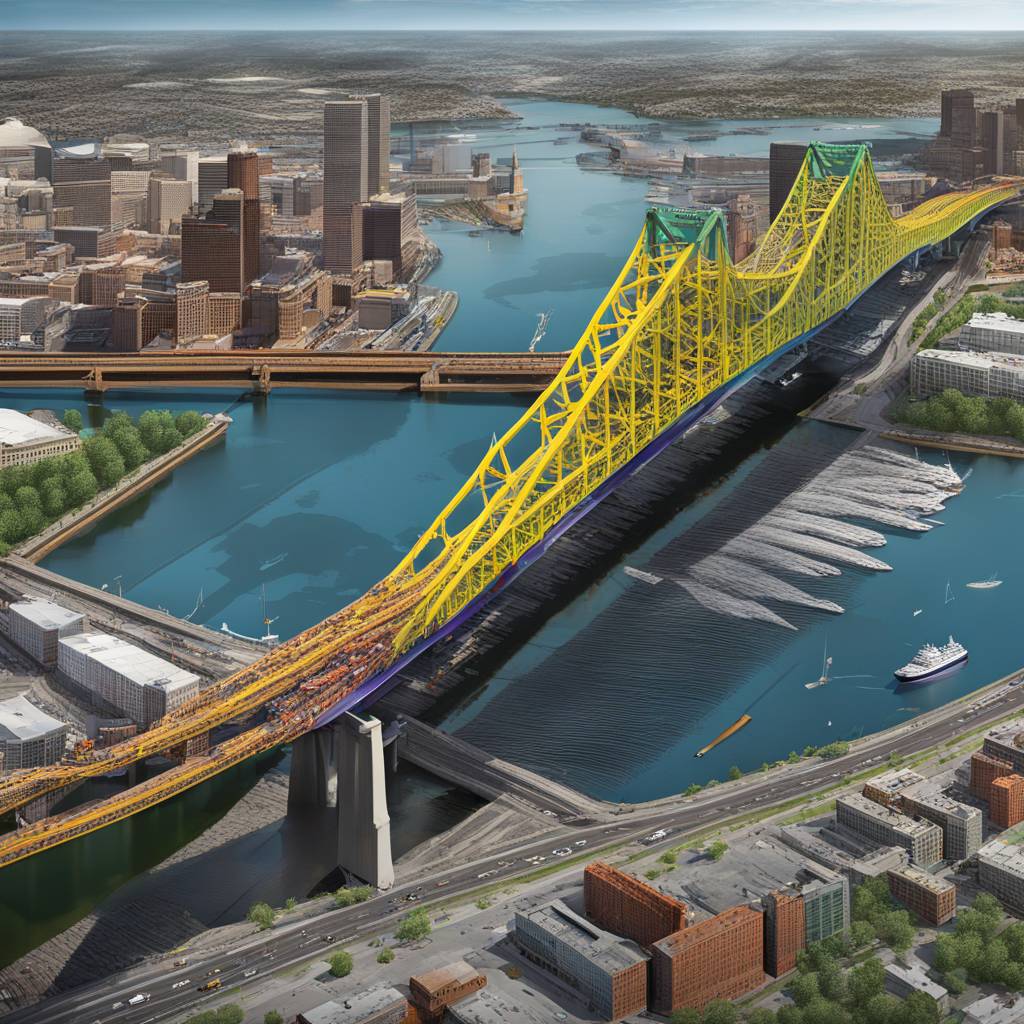The collapse of the Francis Scott Key Bridge in Baltimore resulted in a chaotic search and rescue operation, with two construction workers rescued and six others presumed dead. The Port of Baltimore, one of the busiest ports in the United States, was significantly impacted by the bridge collapse as ship traffic had to be rerouted to nearby ports such as Norfolk, Va., and the Port of New York and New Jersey. This situation has led to increased stress on global supply chains, which were already facing challenges such as avoiding Houthi attacks in the Red Sea and low-water restrictions in the Panama Canal. Companies are now considering rerouting their cargo through West Coast ports to avoid delays caused by the bridge collapse and other existing constraints on the East Coast.
The sudden increase in cargo volumes arriving at U.S. ports, combined with the impact of the bridge collapse in Baltimore, could potentially lead to congestion and delays similar to those experienced during the peak of the pandemic-induced supply chain crisis. The lack of investment in America’s ports has left them ill-equipped to handle the surging volumes expected to be rerouted from Baltimore to neighboring ports. America’s ports play a crucial role in the country’s economy, yet they are currently limited in their capacity to accommodate the largest and most efficient container ships that primarily sail on the Asia to Europe trade lane.
The Biden administration’s plans to invest in new, U.S.-manufactured container cranes are seen as a positive step towards improving the efficiency and capacity of American ports. However, it remains to be seen whether these investments will truly enhance the throughput of the ports and enable them to handle larger ships. Port modernization and infrastructure improvements are essential to strengthen America’s supply chain and economy, as well as to create high-paying jobs in and around port areas. Implementing advanced technologies in port operations can increase efficiency and resilience, making the infrastructure more capable of withstanding shocks and disasters.
It is crucial for the U.S. to invest more in dredging ports, building new rail connections, automating port operations, and implementing container dispatching software to increase the throughput of containers and trucks. The failure to modernize and improve port infrastructure leaves the country vulnerable to disruptions like the one caused by the bridge collapse in Baltimore. By leveraging existing off-the-shelf technologies and lessons learned from successful port modernization projects around the world, the U.S. can enhance its supply chain resilience and strengthen its economy.
Ryan Petersen, the chief executive of Flexport, emphasizes the importance of investing in America’s supply chain infrastructure to ensure the country’s prosperity and resilience. The impact of the bridge collapse in Baltimore highlights the urgent need for improvements in port infrastructure and technology to address existing challenges and prepare for future disruptions. By prioritizing investments in port modernization, the U.S. can enhance its competitiveness in global trade and ensure the efficient movement of goods through its ports.


